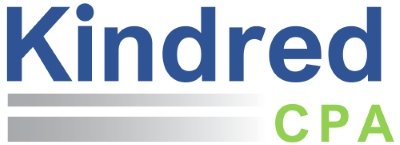We don’t usually comment on pending legislation because of the uncertainty of its passage. However, a tax bill is being fast-tracked through Congress that includes…
 On Friday, March 27, President Trump signed the Coronavirus Aid, Relief, and Economic Security (CARES) Act, which includes provisions for both businesses and individuals. The purpose of this post is to provide you with a high level overview of this legislation, explain how it integrates with previous COVID-19 legislation, and to direct you to links with additional details. As more details become available, we’ll update this page – this was last updated 5/11/20 at 11:30 a.m.
On Friday, March 27, President Trump signed the Coronavirus Aid, Relief, and Economic Security (CARES) Act, which includes provisions for both businesses and individuals. The purpose of this post is to provide you with a high level overview of this legislation, explain how it integrates with previous COVID-19 legislation, and to direct you to links with additional details. As more details become available, we’ll update this page – this was last updated 5/11/20 at 11:30 a.m.
Businesses:
The Small Business Administration continues to update their FAQs regarding the Paycheck Protection Program, most recently as of May 6, 2020, which can be accessed here. We continue to wait for more specific guidance on loan forgiveness provisions, but in the meantime, follow the steps outlined in our blog post here.
Shut Down Completely or Partially? Here’s Some Relief
Employee Retention Credit
If your business operations have been completely or partially shut down due to a government order – like the recent “stay at home order” for the state of Kansas – you’re eligible for a refundable payroll tax credit equal to 50% of wages paid to certain employees. Here are some definitions:
Eligible Employers:
Companies (including non-profits) whose operations have been fully or partially suspended as a result of a government order limiting commerce, travel or group meetings (i.e., restaurants, hotels, travel/tourism industry). The credit is also provided to employers who have experienced a greater than 50% reduction in quarterly receipts, measured on a year-over-year basis.
If you had an average of 100 employees or fewer in 2019, all employee wages are eligible, regardless of the number of employees who are furloughed due to your business slowdown/closure. If you had more than an average of 100 employees in 2019, only the wages of your furloughed employees/those whose hours were reduced are eligible for the credit.
This credit is not available to employers receiving Small Business Interruption Loans.
Wages:
Wages include health benefits and are capped at the first $10,000 paid by the employer for an eligible employee. It does not include paid sick leave or family leave paid through the Families First Coronavirus Response Act (FFCRA). The credit applies to wages paid after March 12, 2020 and before January 1, 2021.
Payroll Tax Deferral:
Employers can defer the payment of the employer’s share of social security taxes (6.2% of applicable wages) until next year. Half of the deferred payroll taxes will be due by December 31, 2021, with the other half due by December 31, 2022.
Net Operating Losses (NOLs):
The Tax Cuts and Jobs Act (TCJA) eliminated the carryback of net operating losses for tax years after 2017. The CARES Act allows for NOLs arising in 2018, 2019 or 2020 to be carried back five years. Businesses can amend or modify tax returns back to 2013 to account for this NOL.
Business Loan Programs
For an overview of assistance available through the Small Business Administration, go to their coronavirus webpage here.
In the CARES Act, there are two different programs for businesses looking for economic assistance:
Economic Injury Disaster Loans (EIDLs) through the Small Business Administration (SBA).
The Lawrence Chamber of Commerce has provided some great information about these loans through this link.
The CARES Act Paycheck Protection Program
FAQs about this program from the Senate Committee on Small Business & Entrepreneurship can be accessed here. You might also find this flyer helpful, put together by the US Chamber of Commerce (thanks to the Overland Park Chamber!).
The Act provides business loans that can be used to cover payroll, rent, utilities, mortgage interest (not principal) and interest on debt existing prior to February 15, 2020. Businesses must have fewer than 500 employees (including full and part-time) to qualify, including nonprofit entities, self-employed individuals and independent contractors. Loans are available in the amount of average monthly payroll times 2.5 plus any EIDL received after 1/31/20. There is also a provision for loan forgiveness during the 8 weeks following disbursement of the loan.
Your best bet is to contact your bank for more information about the Paycheck Protection Program, as these are administered through SBA-approved lenders. We’ve also found a good overview here.
Preparing for Loan Applications
Thanks to our banker friends for the preliminary checklist shown below of documentation needed to apply for loans. As with everything in this emerging legislation, this is subject to change, but will get you started:
-
Have your personal financial statement ready on the SBA approved financial statement (https://www.sba.gov/document/sba-form-413-personal-financial-statement-8a-business-development-program)
-
Know your monthly payroll for 2019/2020 along with any other costs to administer payroll
-
Know your FTE count 2/15/19 to 6/30/19 OR 1/20/20 to 2/29/20
-
Know your general overhead numbers:
-
Interest Payments
-
Rent Payments
-
Utility Costs
-
-
Signed IRS Form 4506T – note that this form MUST be signed exactly as you signed your tax forms (i.e., President, Member, etc.). Otherwise the IRS will kick out the form and you will have to resubmit.
-
Debt schedule – a listing of all your business debts, who you owe, what is the collateral, what is the interest rate, what is the principal balance, what is the payment amount and when the loan is scheduled to mature.
-
Your last three years’ business tax returns in a PDF format to be uploaded to the website.
-
Your year-end 2019 profit & loss and balance sheet ready to upload in PDF format.
-
SBA form 1919 – SBA is supposed to have an updated form shortly*
-
SBA form 5 disaster. Choose “Economic Injury” on the application (no property damage).*
*The last two bullet points are “either or”, meaning if you are going to be applying for the CARES program, that will be the 1919 form (not ready yet) and if you are applying for the Disaster relief loan through the SBA, it would be the last form.
The US Chamber of Commerce has put together some great resources for businesses, including:
Guide to SBAs Economic Injury Disaster Loans (EIDLs)
Guide to the Employee Retention Credit
Guide to Paycheck Protection Programs
And general business resources about coronavirus, which can be accessed here.
Increased Deductions for Charitable Contributions Made by Businesses
Corporations are normally limited to deducting 10% of AGI for charitable contributions, which has been increased to 25% for the 2020 tax year.
Businesses that donate food inventory can now deduct 25% of AGI instead of the normal 15%.
Individuals:
Your Check’s in the Mail. Probably.
Each US adult is eligible to receive a check for up to $1,200, along with an additional $500 for each child under age 17. If you make up to $75,000 as a single taxpayer or $150,000 married filing jointly, you’ll receive the full amount. If your adjusted gross income is more than those amounts, your check will be reduced proportionally until your income reaches $99,000 single or $198,000 married filing jointly, at which point it’s completely phased out. Your income for this purpose is based on your 2019 tax return if you’ve already filed, or 2018 if you haven’t yet filed.
This money will be either deposited directly into your bank account if that information is already on file with the IRS, or you’ll receive a physical check through snail mail at the last address the IRS has for you.
You’ll get your money sooner if the IRS already has your direct deposit information included with your 2018 or 2019 tax return, but if you didn’t, the IRS is setting up a website where you can enter your direct deposit information. As of 4/1/20, this site is not operational but should be soon.
And if you don’t have to file a tax return, you may want to file “a simple tax return” so the IRS knows you’re eligible for a stimulus payment.
More information is available on the IRS website by clicking here.
Need More Money?
Early Withdrawal Penalty Waived for 2020
The 10% penalty on distributions before age 59 1/2 from IRAs and qualified retirement plans (like 401(k)s) has been waived for “coronavirus-related distributions”. Here’s what those look like:
- Made between January 1 and December 31, 2020
- Made by an individual who is personally or has a family member infected with coronavirus
- Or an individual who has experienced economic hardship due to coronavirus through quarantine, business closure, layoff, or reduced hours
- Limited to $100,000
- May be recontributed to the IRA or qualified retirement plan
- Employers can amend their retirement plan documents to allow for these distributions
That doesn’t mean, however, that these distributions are completely tax-free. You’ll still need to pay tax on the distribution but can do so over a three year period.
If you pay back your qualified retirement plan, you can do so without violating the annual contribution limits. Any amount paid back to your plan within the 3-year period is treated as if it was a rollover and is not taxable.
Required Minimum Distributions Waived
Required minimum distributions (RMDs) from IRAs and qualified retirement plans that are due in 2020 are waived. This includes RMDs that would be due April 1, 2020 because the account owner turned 70 1/2 in 2019. Individuals do not have to have been impacted by the pandemic in order to qualify for this waiver.
Retirement Plan Loan Rules Relaxed
In addition, defined contribution plans may allow plan loans up to $100,000, and repayment of existing loans can be extended for employees who are affected by coronavirus.
New Charitable Contribution Deductions
There are two provisions affecting charitable contributions:
- Cash contributions to public charities made in 2020 are eligible for a $300 “above the line deduction” – meaning it reduces your adjusted gross income (AGI) for the year. This allows individuals who don’t itemize their deductions to receive a benefit for making charitable contributions.
- Normally, your deduction for charitable contributions can’t exceed a certain percentage of your AGI, but in 2020 you can contribute up to 100% of your AGI to public charities.
The rules for charitable contributions made by businesses have also been relaxed – see below.
Unemployment Assistance is Expanded
The federal government will assist state-run unemployment programs in the following ways:
Pandemic Unemployment Assistance will cover not only employees laid off from businesses but also self-employed individuals in the gig economy, independent contractors, part time workers, and those with limited work histories.
Unemployment compensation will be increased by $600/week through July 31, 2020.
Through December 31, 2020, an additional 13 weeks of federally funded unemployment compensation can be paid to individuals who exhaust their state unemployment benefits.
In states that require a week-long waiting period before unemployment compensation begins can be reimbursed by the federal government for paying that first week of unemployment.
Check Out Our Other Resources
We continue to update our COVID-19 Payroll and Tax page here on our website, as well as information about the Families First Coronavirus Response Act (FFCRA) paid leave provisions. All of these resources will be updated as additional guidance and information becomes available.



